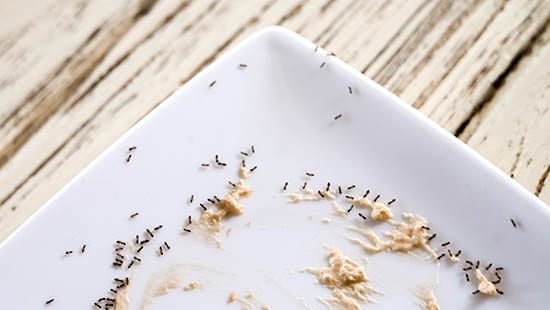
Pest Files: Locating Ant Nests
How to Find the Nest
Trailing worker ants is a good way to find the nest. Ants are rarely active before 10am and cold, wet weather will also reduce the amount of worker ants foraging. Ants excavate to enlarge the nest and nest entrances usually have little ‘volcanoes’ of dry soil around them. Look for these both inside and out as they are good indicators of an active nest.
Where there are no piles of sand marking the entrance, there will be small holes. Try blowing gently into suspected entrances or tapping next to them – workers will usually emerge to defend the nest.
Having found one nest, do not stop looking. Ants invading a building are normally nesting within six meters of the building. Continue to inspect until you have found all the potential problem nests.

What Attracts Ants?
- Liquid spillage on any storage equipment.
- Accumulated food materials on kitchen floors, under equipment and behind walls.
- Food materials in the bottom of refuse bins, dumb waiters, lift pits etc.
- Spilled rubbish or accumulation of waste around exterior refuse holding areas including drinks dregs in empty bottles.
- Bedside cabinets with sticky sweet deposits.
- Accumulated food and sweet residues on or around waste disposals and beverage dispensers.
Know the Facts
In addition, ants can nest up against buildings in flower beds and will also build nests in the wall cavity of external walls and occasionally, beneath the floor inside buildings.
Ants can also be a problem when a building extension is built over a nest. Increasingly, ants are found nesting inside buildings in areas where there is no sand or soil, for instance, behind tiles on an internal wall.
Garden ants will also build nests inside planters used for tropical plants. Here, the correct identification of ant species is important.
More Resources

Ants: Complex, but Controllable Pest
With more than 12.400 species of ants in the world, controlling ants seems complex. By understanding ant behavior, you can eliminate them.

Common Types of Ants
Ants can cause serious problems for your business. Use this guide to identify common types of ants so you can confidently maintain a pest-free facility.


